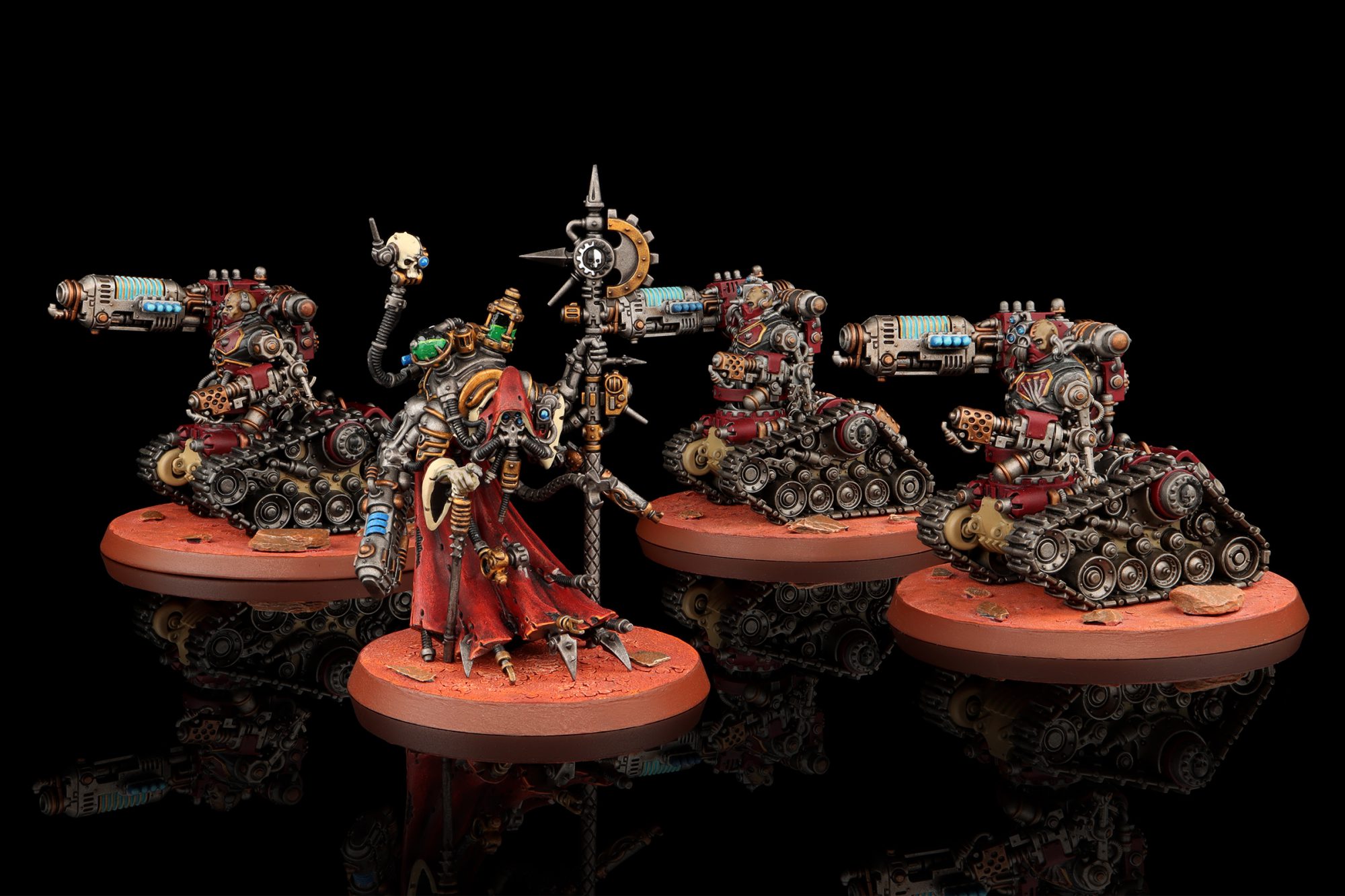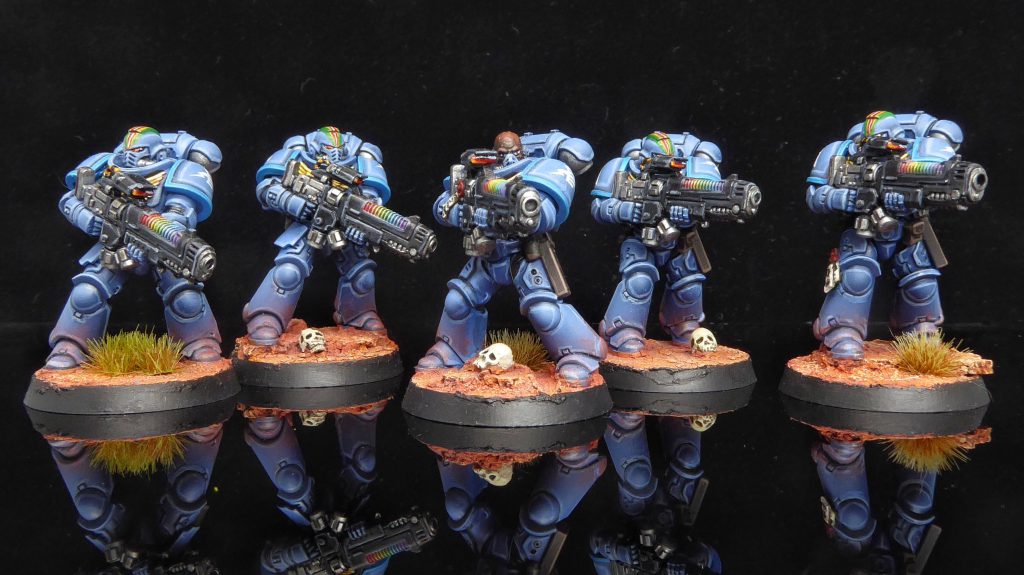Warhammer 40k 10th Edition has been unleashed upon us, and this week’s Hammer of Math takes a deep look at the changes associated with plasma and other weapons with the HAZARDOUS keyword.
In its own way, the Imperial plasma gun is the perfect representation of the Warhammer 40,000 universe. Technologically advanced, incredibly lethal, ubiquitous from hive gangs to Imperator Titans, and every shot contains the very real possibility of self immolation. The reason for this is because such is the immense power of plasma weaponry that there’s a risk that the weapon cannot contain its own energies, and it may be forced to vent superheated gasses in the vicinity. In the case of holy war engines such as Titans, tanks, or Dreadnoughts this can cause minor damage to the vehicle. If the firer happens to be organic, then the consequence of an overheating plasma weapon is typically death or severe injury. From the perspective of the Adeptus Mechanicus this is perfectly acceptable; it’s far easier to make another human than it is to make another plasma gun.

On the tabletop, the effects of plasma weaponry are also lethal. In 8th Edition firing an overcharged weapon would kill the bearer on a hit roll of one, which meant that the effect could be exacerbated when firing with a hit penalty or nullified when firing with a hit bonus. Since modifiers could stack back then (and rolls less than 1 counted as 1) you could even encounter situations where a weapon would explode half the time or more. In 9th Edition Games Workshop changed the effect to occur an unmodified hit roll of 1, which made plasma a bit safer, but still tied it to the hit roll – which meant that re-rolls were often essential to protect a weapon (and you could calculate the cost per shot).
Editor’s Note: We know that some weapons have the option to not overcharge, and therefore may not be hazardous. We are also know that those who make this choice are cowards.

In 10th edition GW has taken another look at these weapons. When fired, weapons with the HAZARDOUS trait now require the player to roll a Hazardous test. Regardless of the number of shots fired, the player rolls one Hazardous test for each weapon fired. If you fire 10 overcharged Hellblasters, you roll 10 Hazardous tests. Every result of 1 will kill a model that’s equipped with a Hazardous weapon, or in the case of CHARACTERS, MONSTERS, and VEHICLES the firing model will take 3 mortal wounds instead. It should be noted that this effect has some fun synergy with the FIRING DECK rule; if you take a unit of plasma gunners and put them in a vehicle with firing points, the vehicle counts as having fired the weapon and will take the mortal wounds while the models inside remain just fine. It also opens up the possibility of a transport firing some HAZARDOUS weapons from firing points, destroying itself in the process, and then the disembarked models inside firing their weapons since their unit hasn’t actually shot yet.
Since Hazardous is no longer linked to hit rolls, re-rolls don’t help you any more – you have to take a separate test and having your Captain shouting at you to shoot better won’t save you from your plasma gun blowing up. That said, not all is lost, because the 10th edition version of the Command Re-roll Stratagem adds a clause to work on Hazardous tests – so you can reduce the odds of your guy dying a bit, but as a Stratagem you will only get to re-roll one test each phase and so you are still at more risk than previously.
So how hazardous is HAZARDOUS? In 9th edition terms it’s equivalent to shooting a single shot plasma gun without any re-rolls (subject to the Command Re-roll noted above). If the 9th edition unit did have the ability to re-roll ones then it’s slightly worse than firing a weapon that fired 6 shots. The chart below shows the probability that at least a specified number of models will die based on the firing unit. For example, a unit of 5 plasma gunners has a 60% chance of losing at least one model.
The conclusion here is that Hazardous weapons are much more dangerous than they were, without the safety valve of Hit re-rolls to massively reduce your chances of something dying – and logically, the more models you fire, the higher your chances of at least some of them dying. On the other hand, your probabilities no longer increase based on the number of shots per model – so something like a macro-plasma incinerator is not arbitrarily more dangerous because you rolled a 6 for number of shots instead of a 2.
Numbers-wise that’s all there is to it, but there’s a couple of useful things to remember on the rule itself. The first a particular bugbear from prior editions, where firing massed overcharged plasma could get very complicated and time-consuming because you were supposed to kill the exact model that rolled a 1. Hazardous no longer works this way, and so you don’t need to roll separately for each individual Hellblaster, for example. Instead, a failed test just destroys any model equipped with a Hazardous weapon, and the controlling player picks which one; this should massively speed up gameplay compared to the old system where playing properly meant rolling for each model one at a time, or picking up different coloured dice for each one, or some other system.
The second is a caveat to the caveat; if a CHARACTER model fires a Hazardous weapon, that model must take the 3 mortal wounds themselves, even if they’re attached to a unit and normally couldn’t be allocated wounds at all – and so still needs to roll separately. Usually this will make logical sense, because they’ll be the only model that has a Hazardous weapon to begin with, but if you’ve attached a Librarian to a unit with a plasma gun you’ll need to take care to specify who’s testing for what, and apply the wounds accordingly.
There’s a lot more to cover in 10th edition, and I’m as excited to share it with you as I am to play the new game. There’s going to be a lot to parse through, and if there’s anything you’re particularly interested in please let us know!
Thanks for reading! If you have any questions or comments feel free to drop us a note in the Comments below or email us at contact@goonhammer.com. That’s also the best way to suggest topics for future articles.



